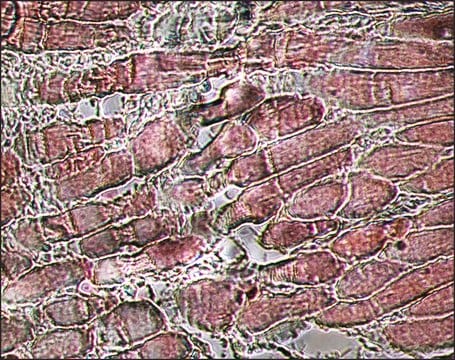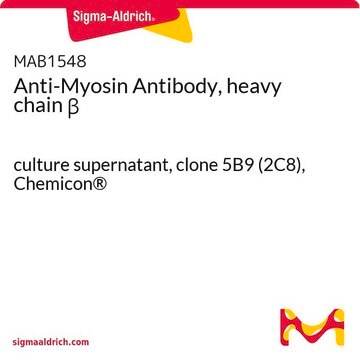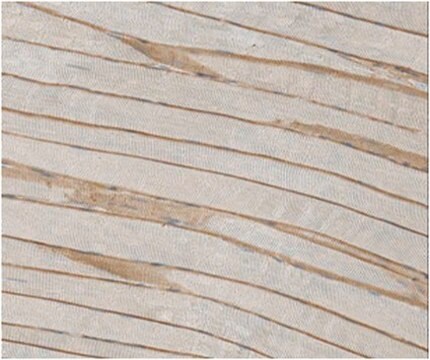M1570
Monoklonaler Anti-Myosin-Antikörper (skelettal, Fast) in Maus hergestellte Antikörper

clone MY-32, purified from hybridoma cell culture
Synonym(e):
Monoclonal Anti-Myosin (Skeletal, Fast) antibody produced in mouse
About This Item
Empfohlene Produkte
Biologische Quelle
mouse
Qualitätsniveau
Konjugat
unconjugated
Antikörperform
purified immunoglobulin
Antikörper-Produkttyp
primary antibodies
Klon
MY-32, monoclonal
Form
buffered aqueous solution
Speziesreaktivität
rat, chicken, rabbit, mouse, human, bovine, guinea pig, feline
Verpackung
antibody small pack of 25 μL
Erweiterte Validierung
independent
Learn more about Antibody Enhanced Validation
Konzentration
~1.0 mg/mL
Methode(n)
immunohistochemistry (formalin-fixed, paraffin-embedded sections): 10-20 μg/mL using porcine tongue
microarray: suitable
western blot: 0.5-1.0 μg/mL using total extract of rabbit skeletal muscle
Isotyp
IgG1
UniProt-Hinterlegungsnummer
Versandbedingung
dry ice
Lagertemp.
−20°C
Posttranslationale Modifikation Target
unmodified
Angaben zum Gen
human ... MYH1(4619) , MYH2(4620)
mouse ... Myh1(17879) , Myh2(17882)
rat ... Myh1(287408) , Myh2(691644)
Suchen Sie nach ähnlichen Produkten? Aufrufen Leitfaden zum Produktvergleich
Allgemeine Beschreibung
Immunogen
Anwendung
Immunohistochemistry (1 paper)
Physikalische Form
Haftungsausschluss
Not finding the right product?
Try our Produkt-Auswahlhilfe.
Empfehlung
Ähnliches Produkt
Lagerklassenschlüssel
10 - Combustible liquids
WGK
WGK 1
Analysenzertifikate (COA)
Suchen Sie nach Analysenzertifikate (COA), indem Sie die Lot-/Chargennummer des Produkts eingeben. Lot- und Chargennummern sind auf dem Produktetikett hinter den Wörtern ‘Lot’ oder ‘Batch’ (Lot oder Charge) zu finden.
Besitzen Sie dieses Produkt bereits?
In der Dokumentenbibliothek finden Sie die Dokumentation zu den Produkten, die Sie kürzlich erworben haben.
Kunden haben sich ebenfalls angesehen
Unser Team von Wissenschaftlern verfügt über Erfahrung in allen Forschungsbereichen einschließlich Life Science, Materialwissenschaften, chemischer Synthese, Chromatographie, Analytik und vielen mehr..
Setzen Sie sich mit dem technischen Dienst in Verbindung.














